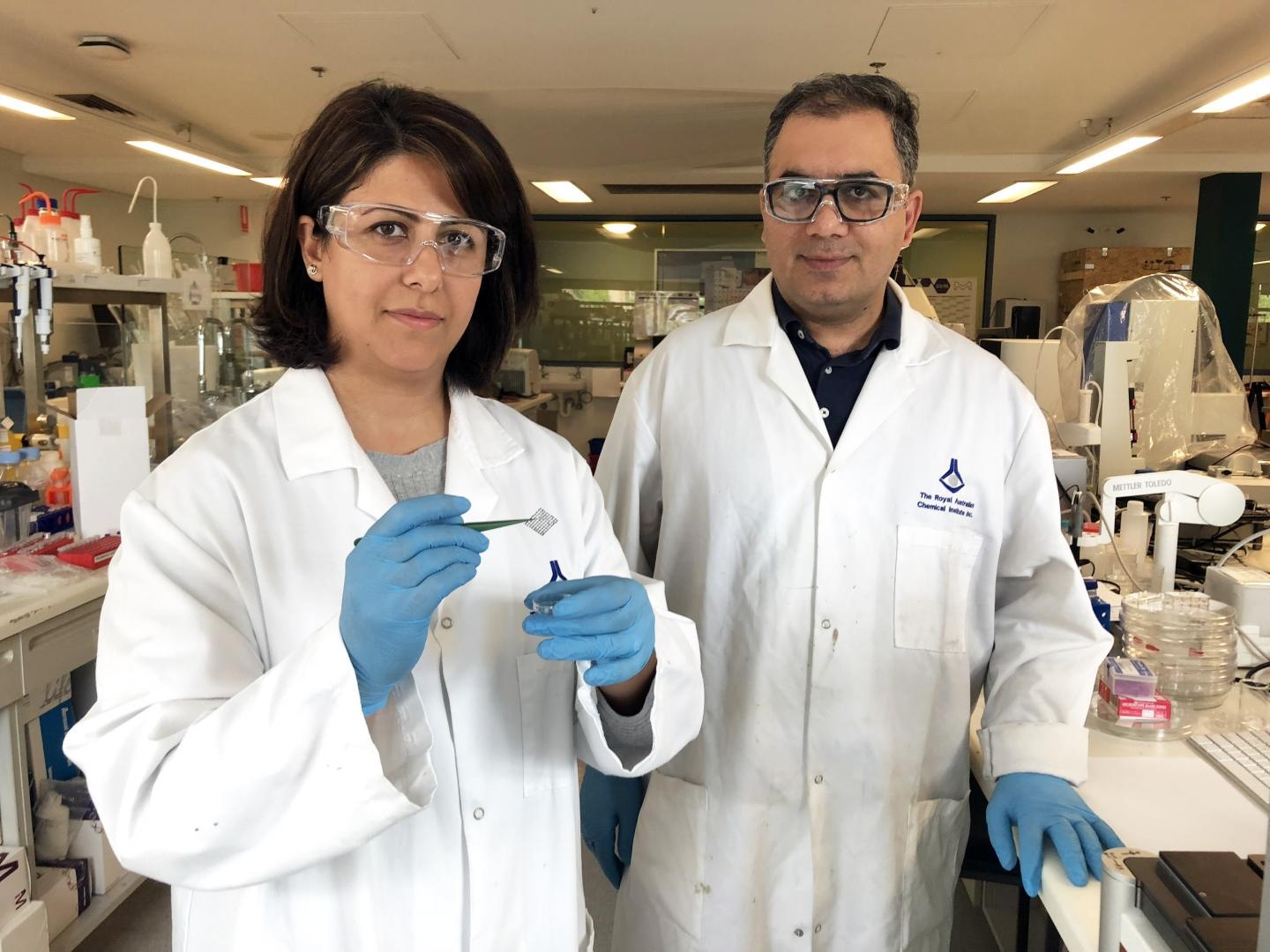Nov 30 2018
Why hasn’t the “supermaterial” graphene redefined electronics as promised? A new study reveals the answer and also demonstrates how to increase its performance by two-fold and harness its unique potential.
 Drs. Esrafilzadeh and Jalili working on 3D-printed graphene mesh in the lab. (Image credit: RMIT University)
Drs. Esrafilzadeh and Jalili working on 3D-printed graphene mesh in the lab. (Image credit: RMIT University)
As the strongest material ever tested, graphene is also transparent, flexible and conducts electricity and heat 10 times better than copper.
Earlier in 2010, when graphene research won the coveted Nobel Prize for Physics, it was welcomed as a transformative material for bio-sensors, flexible electronics, water filters, and more powerful solar panels and computer chips. However, performance has been inconsistent and there has been a slow adoption in the industry.
Now, a research reported in Nature Communications has identified silicon contamination as the main cause of disappointing outcomes and describes how to create pure and higher performing graphene.
Headed by Dr Dorna Esrafilzadeh and Dr Rouhollah Ali Jalili, the RMIT University research team used an advanced scanning transition electron microscope to examine graphene samples that are commercially available in the market, atom by atom.
We found high levels of silicon contamination in commercially available graphene, with massive impacts on the material’s performance.
Dr Dorna Esrafilzadeh, RMIT University.
Testing revealed that natural graphite—the raw material used for making graphene—contained silicon that was not being fully eliminated when processed.
We believe this contamination is at the heart of many seemingly inconsistent reports on the properties of graphene and perhaps many other atomically thin two-dimensional (2D) materials. Graphene was billed as being transformative, but has so far failed to make a significant commercial impact, as have some similar 2D nanomaterials. Now we know why it has not been performing as promised, and what needs to be done to harness its full potential.
Dr Dorna Esrafilzadeh, RMIT University.
Not only did the testing detect these impurities effectively but it also showed how they have a considerable effect on performance, and when the contaminated material was tested as electrodes, it performed up to 50% worse.
This level of inconsistency may have stymied the emergence of major industrial applications for graphene-based systems. But it's also preventing the development of regulatory frameworks governing the implementation of such layered nanomaterials, which are destined to become the backbone of next-generation devices.
Dr Dorna Esrafilzadeh, RMIT University.
The two-dimensional (2D) property of the one-atom-thick graphene sheet makes it suitable for electricity storage and also for novel sensor technologies that are dependent on high surface area.
However, the study shows how that 2D property is also the Achilles’ heel of graphene—that is, it makes it highly vulnerable to surface contamination— and reinforces the importance of high-purity graphite for producing more pure graphene.
With the help of pure graphene, the scientists showed the extraordinary performance of the material when used for building a type of super battery called supercapacitor.
Upon testing, it was found that the device has a massive capacity to hold an electrical charge. So far, it was the biggest capacity recorded for graphene and within the prospect of the predicted theoretical capacity of the material.
In association with RMIT’s Centre for Advanced Materials and Industrial Chemistry, the researchers subsequently applied pure graphene to develop a versatile humidity sensor that has the lowest limit of detection and the highest sensitivity ever reported.
These findings represent an important milestone to gain a complete insight into atomically thin 2D materials and their effective incorporation within high-performance commercial devices.
“We hope this research will help to unlock the exciting potential of these materials.